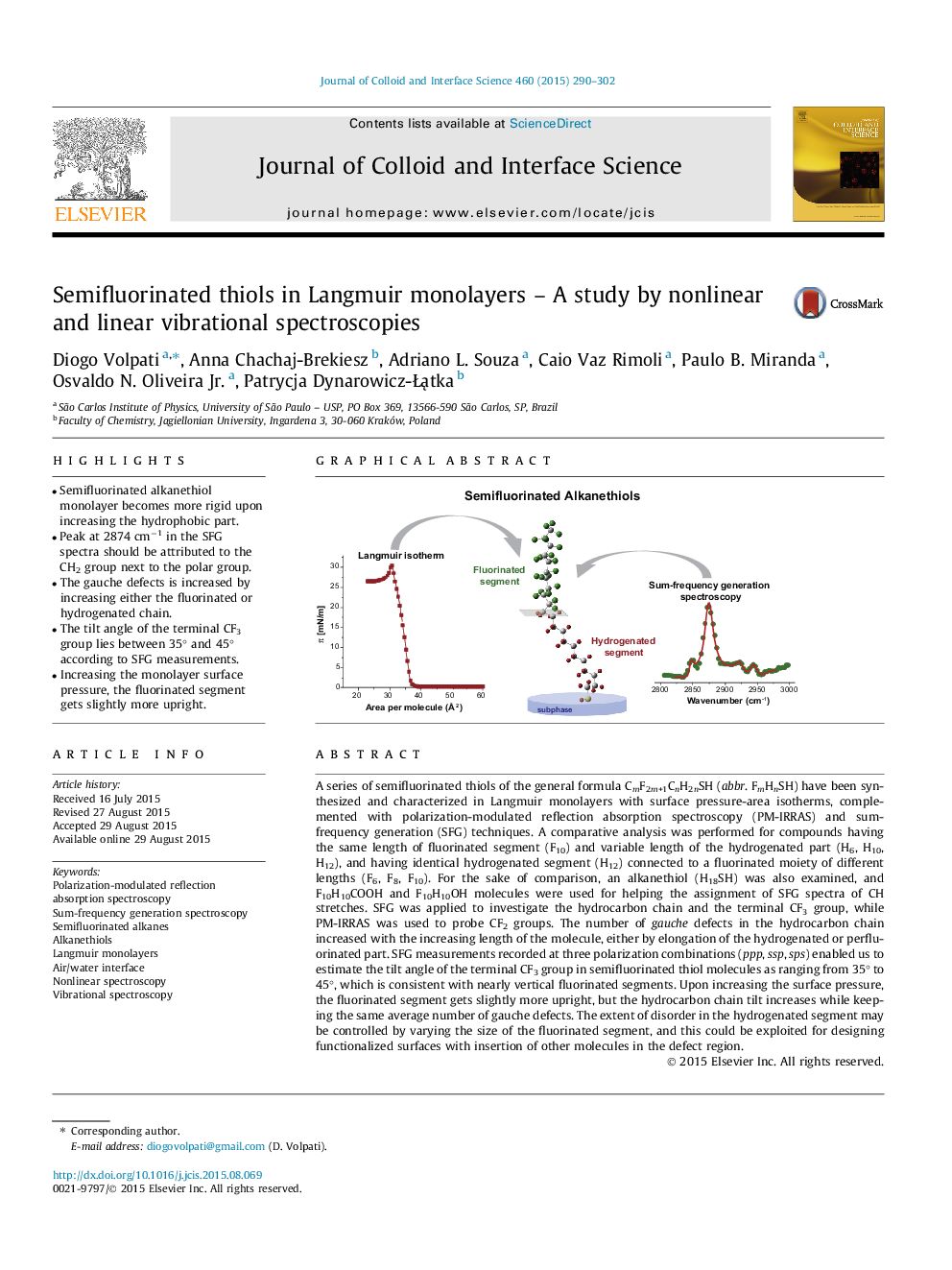| Article ID | Journal | Published Year | Pages | File Type |
|---|---|---|---|---|
| 606572 | Journal of Colloid and Interface Science | 2015 | 13 Pages |
•Semifluorinated alkanethiol monolayer becomes more rigid upon increasing the hydrophobic part.•Peak at 2874 cm−1 in the SFG spectra should be attributed to the CH2 group next to the polar group.•The gauche defects is increased by increasing either the fluorinated or hydrogenated chain.•The tilt angle of the terminal CF3 group lies between 35° and 45° according to SFG measurements.•Increasing the monolayer surface pressure, the fluorinated segment gets slightly more upright.
A series of semifluorinated thiols of the general formula CmF2m+1CnH2nSH (abbr. FmHnSH) have been synthesized and characterized in Langmuir monolayers with surface pressure-area isotherms, complemented with polarization-modulated reflection absorption spectroscopy (PM-IRRAS) and sum-frequency generation (SFG) techniques. A comparative analysis was performed for compounds having the same length of fluorinated segment (F10) and variable length of the hydrogenated part (H6, H10, H12), and having identical hydrogenated segment (H12) connected to a fluorinated moiety of different lengths (F6, F8, F10). For the sake of comparison, an alkanethiol (H18SH) was also examined, and F10H10COOH and F10H10OH molecules were used for helping the assignment of SFG spectra of CH stretches. SFG was applied to investigate the hydrocarbon chain and the terminal CF3 group, while PM-IRRAS was used to probe CF2 groups. The number of gauche defects in the hydrocarbon chain increased with the increasing length of the molecule, either by elongation of the hydrogenated or perfluorinated part. SFG measurements recorded at three polarization combinations (ppp, ssp, sps) enabled us to estimate the tilt angle of the terminal CF3 group in semifluorinated thiol molecules as ranging from 35° to 45°, which is consistent with nearly vertical fluorinated segments. Upon increasing the surface pressure, the fluorinated segment gets slightly more upright, but the hydrocarbon chain tilt increases while keeping the same average number of gauche defects. The extent of disorder in the hydrogenated segment may be controlled by varying the size of the fluorinated segment, and this could be exploited for designing functionalized surfaces with insertion of other molecules in the defect region.
Graphical abstractFigure optionsDownload full-size imageDownload high-quality image (147 K)Download as PowerPoint slide
